Types of Insects
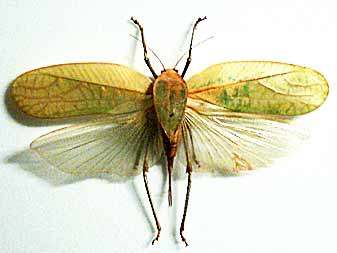
Q: How many insects are in the world?
A: If you are talking about the number of different kinds of insects in the world, a good scientific estimate is that there are 1,017,018 species of insects in the world. Wow! That means you could spend your whole life looking at different kinds of insects and never see them all. Three out of four creatures on the planet are insects. Some rough estimates of species counts by type: 2,000 praying mantis, 5,000 dragonfly, 20,000 grasshopper, 82,000 regular “bugs”, 120,000 fly, 110,000 bee, wasp ant and sawfly 170,000 butterfly or moth and 360,000 beetle.
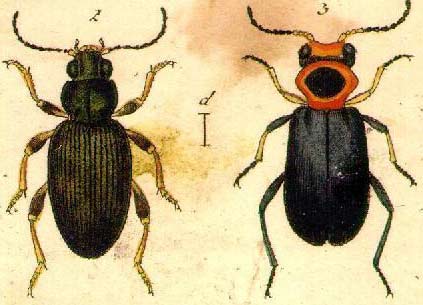
The Smithsonian – Jakob Sturm’s Insecten-Sammlung (1796) Subsection 1
Q: What insect lives the longest?
A: Tarantulas can live 30 years; a queen termite has been known to live 50 years; and there are, of course, the 17-year locusts. Most bugs live less than a year and are seasonal. However, some wood beetles can emerge from wood where they live after as long as 40 years!! In one recorded case, the beetles came out of wood that had long ago been cut down and made into a bookshelf!
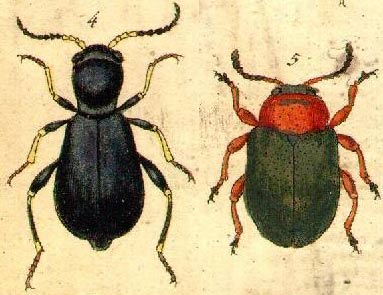
The Smithsonian – Jakob Sturm’s Insecten-Sammlung (1796) Subsection 2
Q: Why do insects like light?
A: No one really knows. Most scientists think that bright lights confuse the insects’ guidance systems so they can’t fly straight any more.
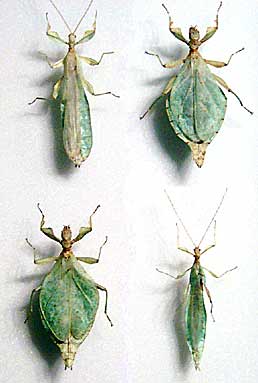
Q: What is the largest insect?
A: That depends on what you mean by largest. One contender for the biggest (in terms of the body length at least) is the longhorn beetle from the South American Amazon appropriately name (Titanus giganteus) – “Big Giant” – that can be measured as long as 10 inches (25 cm). Truly though, the longest insect has to be the stick insect (Phobaeticus kirbyi) from Asia. The bodies of females can be over 14 inches (36 cm) in length and with the legs stretched-out they can be 21 inches! The heaviest insect however, is the goliath beetle from Africa which weighs up to 3.4 oz (96 g).
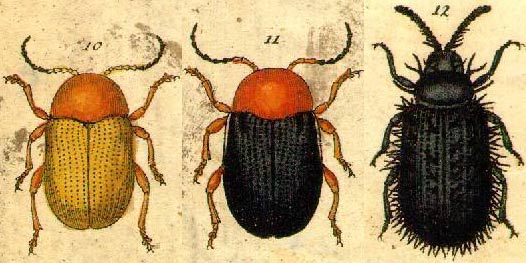
The Smithsonian – Jakob Sturm’s Insecten-Sammlung (1796) Subsection 3
Q: Do insects have blood and do they bleed when they are hurt?
A: Insects have blood, but it’s not like our blood. Our blood is red because it has hemoglobin, which is used to carry oxygen to where it is needed in the body. Insects get oxygen from a complex system of air tubes that connect to the outside through openings called spiracles. So instead of carrying oxygen, their blood carries nutrients from one part of the body to another. They do bleed when they are hurt, and their blood can clot so they can recover from minor wounds.
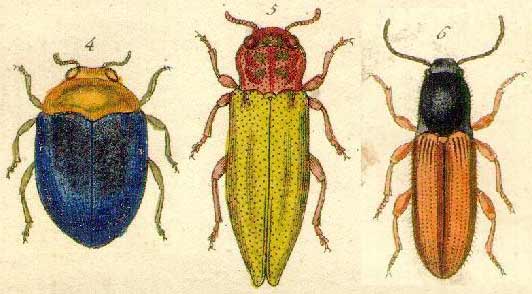
The Smithsonian – Jakob Sturm’s Insecten-Sammlung (1796) Subsection 4
Q: Why do insects drown in water?
A: Not all insects drown in water. In fact, quite a few live there for at least part of their lives. Insects breathe through holes in the sides of their bodies. If they can’t get air in through the holes, they will suffocate. That’s why insects that are not specialized for living in water will die in water. But dragonfly nymphs, mosquito larvae, and water beetles all live in water quite happily!

Luna Moth – Montreal Insectarium
Entomology is the study of insects. Insects have an exoskeleton, three body segments – the head, the thorax, and the abdomen. The head is where you find all the sensory organs – the eyes, ears, mouth and antennae. The thorax is where all of the insect’s legs and wings are attached. The abdomen is where the insect digests its food and where its reproductive organs are located. Most insects have 2 pair of wings, but some have one pair like flies.
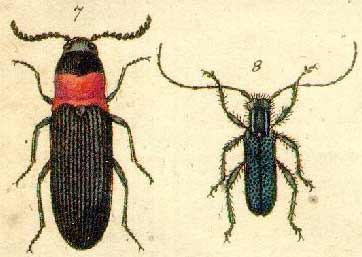
The Smithsonian – Jakob Sturm’s Insecten-Sammlung (1796) Subsection 5
Certain types of fleas may be trained to perform various feats such as jumping through hoops, juggling, and pulling objects several hundred times their weight. Fleas can jump the equivalent of what, relative to body size, would be the length of a football field for a human.
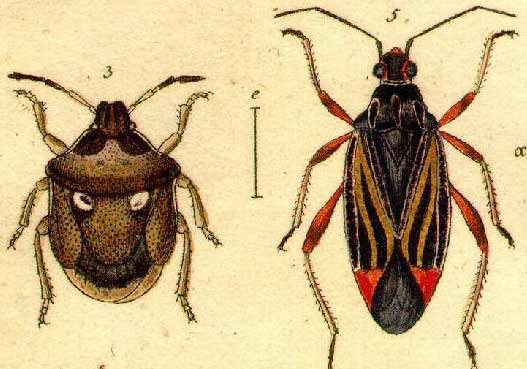
The Smithsonian – Jakob Sturm’s Insecten-Sammlung (1796) Subsection 6
Certain large spiders are very powerful and can kill small birds, rats, fish, and other small animals. Although spiders are officially arachnids not insects.
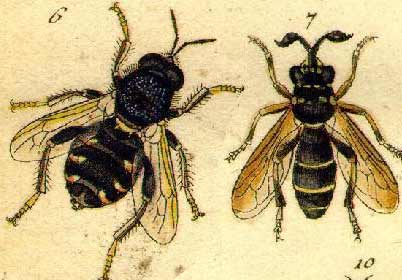
The Smithsonian – Jakob Sturm’s Insecten-Sammlung (1796) Subsection 7
If you weighed all the ants in the world, the total weight is more than all the people put together. For every human there are one million ants.
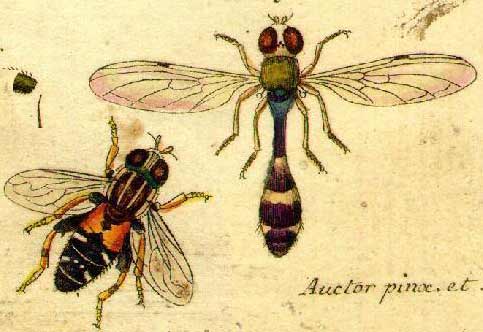
The Smithsonian – Jakob Sturm’s Insecten-Sammlung (1796) Subsection 8
Fire ants can find their way back to the nest in full darkness using an internal compass. According to resarchers, they consume very small amounts of a natural mineral called magnetite which functions as a compass.
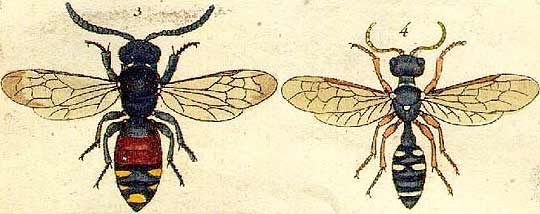
The Smithsonian – Jakob Sturm’s Insecten-Sammlung (1796) Subsection 9
African weaver ants can haul prey weighing more than 1,000 times their own weight up trees to their nests mainly through the aid of large adhesive pads on each foot.
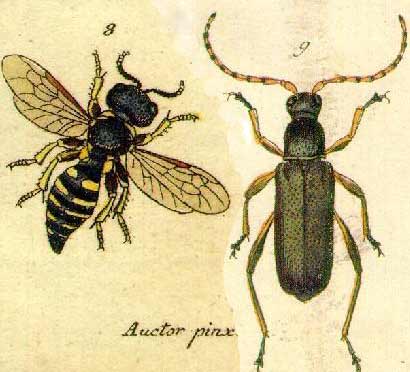
The Smithsonian – Jakob Sturm’s Insecten-Sammlung (1796) Subsection 10
The beautiful, iridescent colors of butterfly wings are a result of the way the tiny over-lapping scales covering the wings reflect light. The beauty is dependent on structure, not pigment.
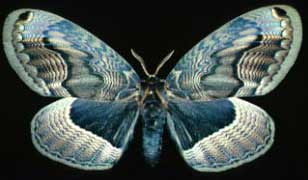
The largest known butterfly, Queen Alexandra’s Birdwing of New Guinea, has a wingspan of about 11 inches. The smallest with a wingspan of only 1/2 inch is the Dwarf Blue from Africa.
The types of insects (orders) are:
- Archaeognatha (bristletails)
- Thysanura (silverfish)
- Ephemeroptera (mayflies)
- Odonata (damselflies and dragonflies)
- Orthoptera (crickets and grasshoppers)
- Plecoptera (stoneflies)
- Grylloblattodea (rock crawlers)
- Phasmotodea (stick and leaf insects)
- Dermaptera (earwigs)
- Mantodea (mantids)
- Blattodea (cockroaches)
- Isoptera (termites)
- Embioptera (web-spinners)
- Zoraptera (angel insects)
- Psocoptera (barklice and booklice)
- Phthiraptera (parasitic lice)
- Hemiptera (bugs)
- Thysanoptera (thrips)
- Megaloptera (dobsonflies and alderflies)
- Rapdhidioptera (snakeflies)
- Neuroptera (antlions and lacewings)
- Coleoptera (beetles)
- Strepsiptera (strepsipterans)
- Mecoptera (scorpionflies)
- Siphonaptera (fleas)
- Diptera (flies)
- Trichoptera (caddisflies)
- Lepidoptera (moths and butterflies)
- Hymenoptera (bees, wasps, ants, sawflies)
